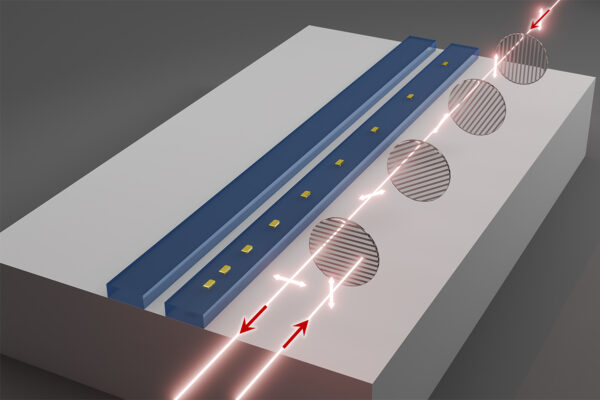A new approach to control light in photonic circuits
Researchers at WashU have developed a simple, efficient way to enable one-way light transmission in photonic chips.
The mysterious chemical world inside nanopores
Material scientists at Washington University have found ways to control contaminants in nanoporous materials used in water treatment and other manufacturing processes.
Kamilov named Donald L. Snyder Career Development Professor
Ulugbek Kamilov, an engineer at Washington University, has been installed as the inaugural Donald L. Snyder Career Development Professor at the McKelvey School of Engineering.
Made with care
Biomedical engineering students from Washington University have started an assistive technology-focused student group to help local communities, including creating wheelchairs for young children.
McKelvey Engineering honors 2025 distinguished alumni
The McKelvey School of Engineering at Washington University in St. Louis has announced its recipients for the 2025 alumni awards.
Brain decoder controls spinal cord stimulation
Biomedical engineering researchers at Washington University have developed a brain wave decoder that can help people with spinal cord injuries.
A neuro-quantum leap in finding optimal solutions
A computer scientist at Washington University has developed a problem-solving architecture modeled on neurobiology that leverages quantum mechanical behavior to guarantee optimal solutions to complex problems.
Class Acts: Gaelen Clayton
Gaelen Clayton has spent a large part of her four years at WashU thinking about goals — setting them academically and scoring them as a midfielder for the women’s soccer team, which just won the Division III national championship.
Class Acts: Joshin Kumar
Graduate student Joshin Kumar is set to complete his PhD. He then will continue his engineering work at WashU, designing sensors that can detect pathogens.
Researcher for a Day: St. Louis children get up-close look at cutting-edge science
WashU engineer Marcus Foston regularly hosts middle school students to learn about cutting-edge science. It’s part of WashU’s immersive “Researcher for a Day” program.
Older Stories









